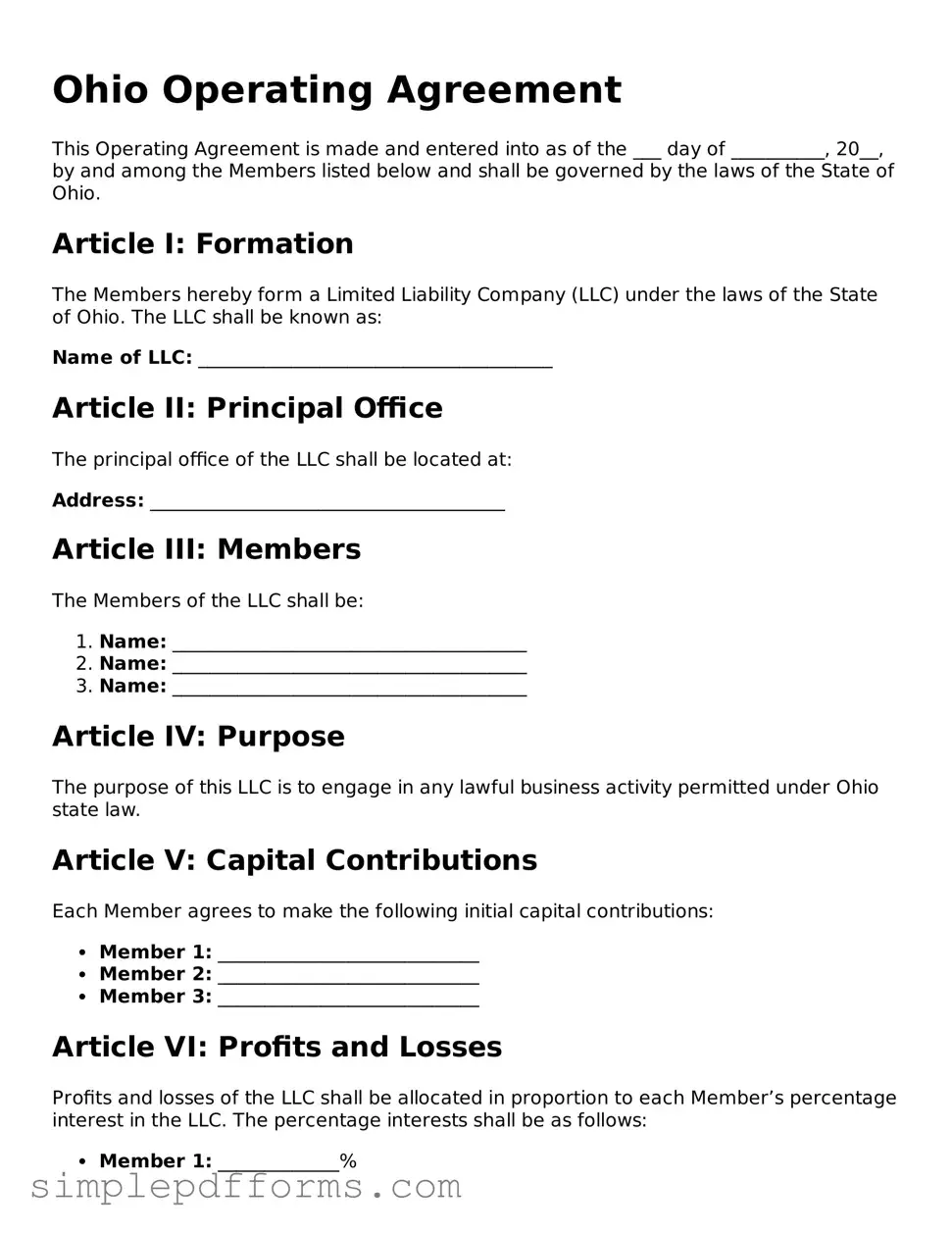Ohio Operating Agreement
This Operating Agreement is made and entered into as of the ___ day of __________, 20__, by and among the Members listed below and shall be governed by the laws of the State of Ohio.
Article I: Formation
The Members hereby form a Limited Liability Company (LLC) under the laws of the State of Ohio. The LLC shall be known as:
Name of LLC: ______________________________________
Article II: Principal Office
The principal office of the LLC shall be located at:
Address: ______________________________________
Article III: Members
The Members of the LLC shall be:
- Name: ______________________________________
- Name: ______________________________________
- Name: ______________________________________
Article IV: Purpose
The purpose of this LLC is to engage in any lawful business activity permitted under Ohio state law.
Article V: Capital Contributions
Each Member agrees to make the following initial capital contributions:
- Member 1: ____________________________
- Member 2: ____________________________
- Member 3: ____________________________
Article VI: Profits and Losses
Profits and losses of the LLC shall be allocated in proportion to each Member’s percentage interest in the LLC. The percentage interests shall be as follows:
- Member 1: _____________%
- Member 2: _____________%
- Member 3: _____________%
Article VII: Management
The LLC shall be managed by the Members, unless a Manager is appointed. If a Manager is appointed, their responsibilities will be outlined in this section:
Manager Name: ______________________________________
Article VIII: Amendments
This Operating Agreement may be amended only by a written agreement signed by all Members.
Article IX: Governing Law
This Agreement shall be governed by the laws of the State of Ohio without regard to its conflicts of law principles.
Signatures
In witness whereof, the Members have executed this Operating Agreement as of the date first above written.
- Member Signature: ____________________________ Date: ______________
- Member Signature: ____________________________ Date: ______________
- Member Signature: ____________________________ Date: ______________
